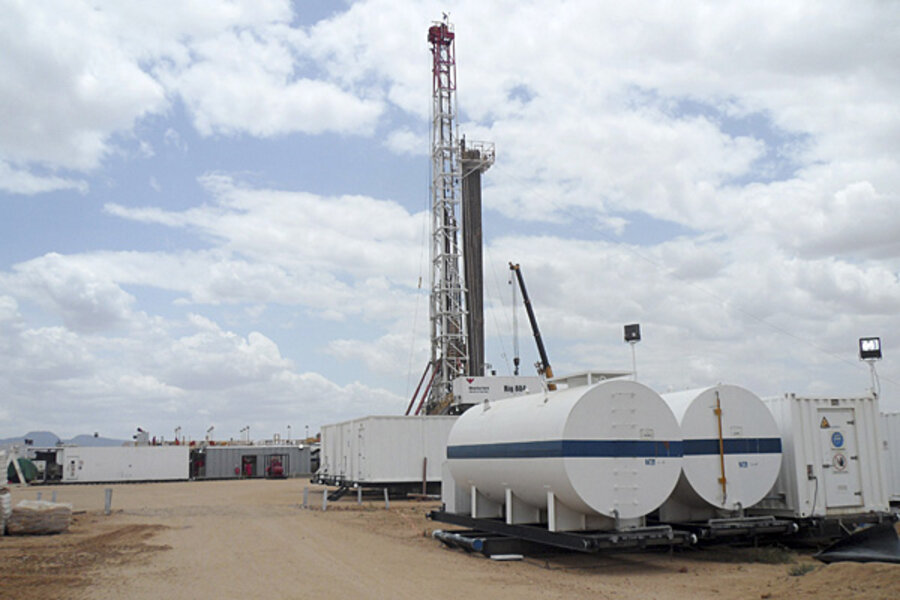Kenya: the future of African oil?
Loading...
Kenya will start pumping its first commercial oil next year and begin exporting in 2016, but this is just the opening salvo: new discoveries in recent months and fast-track new well development make Kenya the darling of East Africa from an investor’s perspective.
Kenya is set to soar past Uganda, which discovered oil much earlier, but is now having a hard time getting it out of the ground and into the market. And the next five months should bring not only news of the first commercial output for Kenya, but new commercial prospects coming online.
As the discoveries pile up for pioneers British Tullow (TLW-LSE) and Canadian Africa Oil (AOI-TSXv), the plan now is to escalate development and further the pace of exploration, while a third winner in this scenario—Taipan Resources(TPN-TSX)—is set to benefit enormously by owning acreage right next to the pioneers’ high-reward prospects. (Related article: China Hopes to Dominate Africa by Boosting Trade Via Indian Ocean)
Tullow, in partnership with Africa Oil--made the first discovery in western Kenya just last year, and in total have discovered more than 300 million barrels of oil equivalent resources in Kenya’s South Lokichar Basin, and they are still exploring.
In late September, the duo announced a fourth crude-rich discovery at Ekales, hitting a net oil pay of 60-100 meters. Significantly, this discovery is right between the Ngamia-1 and Twiga South-1 wells that first put Kenya on the oil map, and the reservoir properties are similar. Drilling success here has been 100% and this is the fourth consecutive wildcat discovery in this basin since March 2012.
In the next 12 months we can expect another 12 wells to be drilled along Kenya’s “string of pearls”, and what investors are sure to be eyeing is the fast progress on two new wells--Bahasi and Sala--being drilled by Tullow and Africa Oil. These wells—targeting 700 million barrels between just the two of them—are in eastern Kenya, and this is where Taipan is.
The catalysts here for Taipan are increasing by the day.
The Bahasi is a 300-million-barrel well that was spudded earlier this month and should be completed around December this year. Upon completion of Bahasi, Tullow and Africa Oil will start drilling the Sala well, which is a massive 402-million-barrel prospect.
This spreads the discovery net wider, and Taipan is eagerly eyeing the results because both new wells are right next to their own Block 9 acreage, so a hit for one here means a hit for all. They’re all targeting the same geology—the Tertiary part of the Lower Cretaceous.
Africa Oil and operator New African Global Energy also expect to spud the highly prospective El Kuran well this month. El Kuran is just to the north of and on trend with Taipan’s Block 1. It’s a low-risk prospect because there has already been a discovery and it’s really about testing commerciality and flow rate.(Related article: Repsol Confident the Next Shale Boom will be in North Africa)
And with the 100% success rate for drilling in Northern Kenya so far, there is reason to be optimistic.
For Taipan, there are plenty of other catalysts as well, including a farm-out agreement earlier this month for 55% of its Block 2B with Premier Oil Investments Limited, which will cover the cost of drilling and testing its Pearl-1 prospect. The drilling campaign should be in place by the second quarter of next year. A lot of information on geology will come to light—before Taipan drills--from the Bahasi and Sala wells.
It was only in 2012 that Tullow and Africa Oil struck the first oil in Kenya. This makes a commercial production timetable of 2014 and export goal of 2016 an amazing success story and puts Kenya leaps and bounds ahead of its neighbors. With a string of successes and money pouring into the country from major oil companies—over $100 million in deals have recently been announced—Kenya’s risk/reward ratio is tipping heavily into investor’s pockets.
Original article: http://oilprice.com/Geopolitics/Africa/The-Big-Winners-in-Kenyas-Oil-Debut.html







